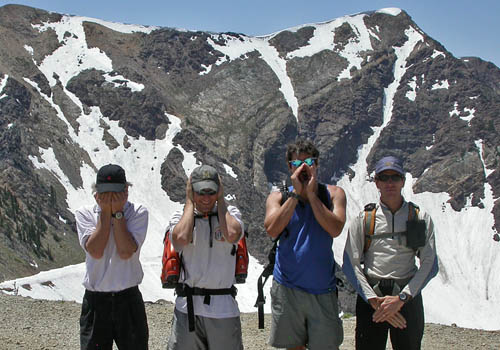What Makes You a Good Partner – Part II
(Continued from yesterday…)Be Yourself
Everyone has different strengths and weaknesses that he or she brings to a team. Breaking your share of the trail is nice, but no more important than knowing first aid and avalanche safety, or keeping the trailbreaker from bonking with a well-timed cookie. It is not always possible to be the physically strongest person in a group, but often times the strongest person won’t mind doing extra work if she is compensated for it with good company and happy partners.
Knowing your limits and comfort zone is critical, but so is being able to articulate them. The best time to do this is when you are first planning a tour, or at least at the trailhead before you set out. If you have anxieties about a tour, it is better to discuss them beforehand and resolve them when you can do something about them, rather than when you are perched on a peak. If partners have concerns, it is their duty to bring them up before it is too late. If a person is delirious with fear on a steep, icy slope, it is often too late to change plans.
Testosterone and competition play a big part in many male-dominated groups, and group pressures can keep people from expressing their concerns. A classic avalanche accident scenario involves a group of people who feel uneasy with a situation, yet never say anything as they are afraid to look like cowards. There is a fine art to learning to express your concerns before you or the group get into trouble. It might take practice to say things like “I’m not comfortable skiing this slope,” or “I’d like a rope on this section,” but oftentimes it can be surprising how many other people feel the same way.

See no evil, hear no evil, speak no evil… and you might get into trouble skiing. Don’t be afraid to speak up and hold your own. Tomorrow – Part III (final)
________________________
Poor communication led to an avalanche burial? Find your partner with a G3 200 Professional Probe with a 15% discount from Backcountry.com

Category: 04 Partners








